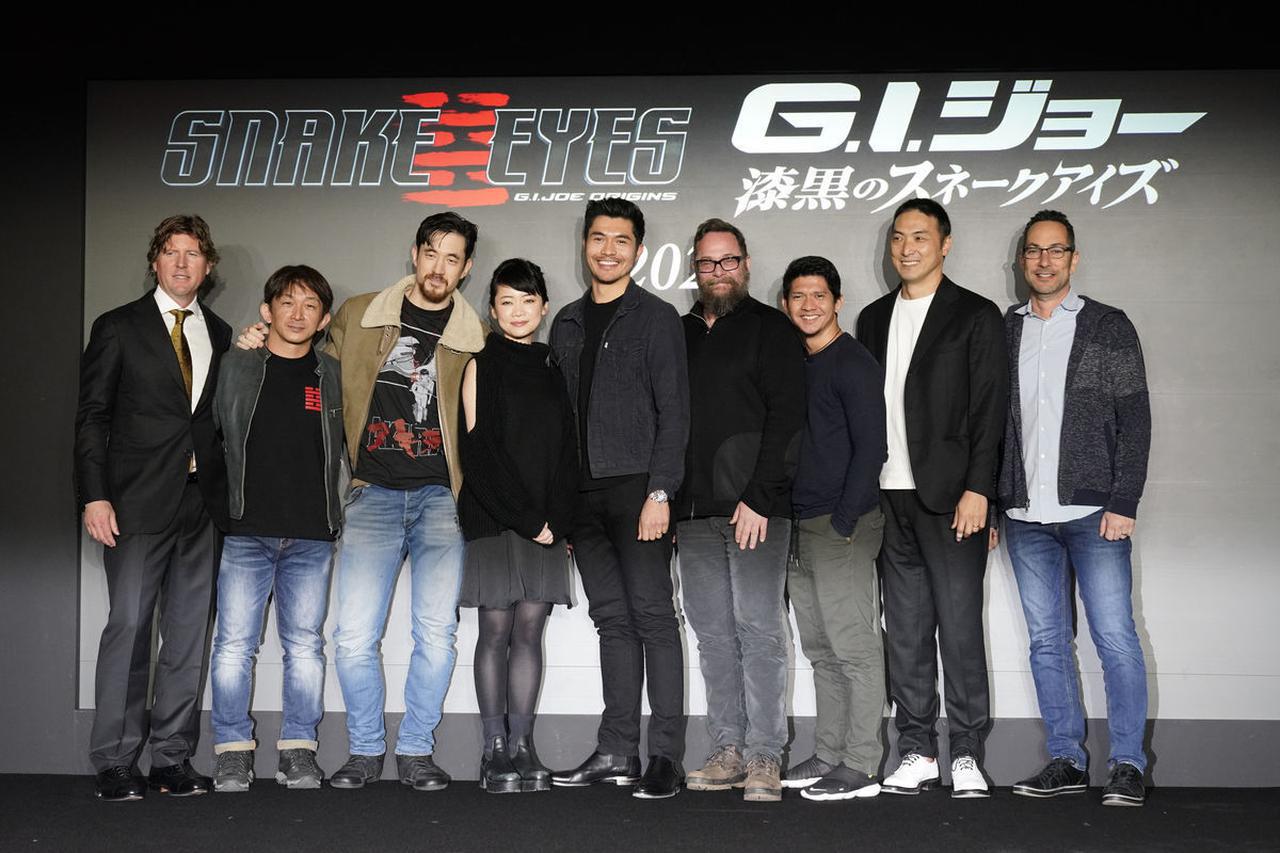Japan’s Production Incentives Are A Win For Both The Local And International Production Sectors

By Taro Imai
At this moment, many film productions have been suspended due to COVID-19. In February, I was due to shoot my Philippine-Japan co-production film called Purple Sun, directed by Carlo Enciso Catu, in Sapporo and Saga, but the shoot has had to be postponed until next winter. It’s a difficult time for independent filmmakers for sure, but let’s talk about the future of filmmaking.

As an independent film producer in Japan, I have been developing four international co-production films and one Japanese film.
Over the past several years, I have learned that it is extremely difficult to find equity investment for independent films in Japan, in fact in any country. Throughout this time, I attended many international film production workshops, and through those workshops, I learned a lot about international co-productions. There are subsidies from some local governments in Japan, and those subsidies tend to support arthouse films aiming for international film festivals. There are also subsidies for international co-productions too.
I have also tried crowdfunding a few times, and it worked to a certain degree. I’m trying to start equity crowdfunding too. Finding equity investors is not easy as I mentioned, but I might be able to find some through equity crowdfunding.
For my company, it is very important to work with international co-production projects and secure budgets through government subsidies and crowdfunding. Last year, 689 Japanese films were released in theaters in Japan. That means someone is financing those films even though it is difficult to find equity investors. One of the reasons why so many Japanese films were released in 2019 might be the success of One Cut Of The Dead in 2018. The budget of the film was JPY 3 million yet it made over JPY 3 billion at the box office. Another notable work in 2019, was the Netflix series The Naked Director. It became sensation not only in Japan, but also all over Asia. Because of its success, I hear more people talking about developing their project with Netflix these days. Japanese TV networks tend to use their own directors when they make TV dramas, but Netflix operates differently. So I guess, though it might be difficult, that there is a chance for independent filmmakers to work with Netflix in the future.
2018 Palme d’Or winner, Shoplifters, became a smash hit both domestically and internationally. One Cut Of The Dead, The Naked Director, and Shoplifters, are very different types of production, but all found an audience internationally. I believe that if we focus on making something unique, there is a chance of international success.
Japan’s first incentive
On January 10, 2020, I was pleased to hear that the new G.I. Joe series Snake Eyes would be shot in Japan. This is the kind of news that makes the headlines, and immediately puts Japan in the spotlight.


Snake Eyes is one of two films which the Japanese Government approved for a pilot incentive program that was launched back in May 2019. The scheme would offer a rebate of up to 20% of qualifying spend for foreign films and TV productions shooting in Japan. In order to qualify, projects must either spend more than JPY 800 million in Japan; or have a total budget of JPY 3 billion and spend more than JPY 200 million in Japan; or secure distribution in more than ten countries and spend more than JPY 300 million in Japan.
A budget of JPY 180 million (around USD 1.7 million) was approved for the pilot program. That’s not a great deal in global terms, but it was enough to kick start a pilot project to secure production of a Chinese film, Detective Chinatown 3, and a U.S. film, Snake Eyes to shoot here in Japan.
The incentive was perhaps enough to lure the productions over competition with existing incentives such as South Korea or Taiwan.
Understanding the competition
Hollywood studios’ determination in where to shoot their production is largely driven by cost. Incentives help to lower the bottom line, but other factors influence the decision making: the predictability and certainty of the incentive structure; the preference for working in a stable democracy with a stable financial sector; and the availability of highly skilled cast and crews and the quality of the production facilities. For these reasons, the bulk of investment goes to secure and stable first-world economies, and there’s already plenty of competition: U.S. states such as Georgia (20% transferable tax credit, plus 10% uplift), Louisiana (30-40% transferable tax credit), New York (30% refundable tax credit for below-the-line and post production), and countries such as the United Kingdom (25% incentive), Canada (18-20% incentives, supplemented with further credits of around 40% on production labour) and New Zealand (20% grant, plus 5% uplift).
Making our mark in Asia
However, there are a number of markets that offer a second tier list of options. While it would be difficult for Japan to mix it in the short term with these advanced markets; one achievable goal could be to develop the market as the most attractive in Asia. Japan is already a step ahead of most of its neighbours given its stable political situation, economy, and infrastructure, not to mention Japan’s unique culture and physical beauty. An incentive that matches or better still, competes with neighbouring countries such as South Korea or Taiwan, plus stays one step ahead of its vibrant contenders in Thailand, Indonesia, Singapore or Vietnam, could stimulate a surge in production.
Everybody wins
The benefits flowing from an increased investment through a pipeline of major production in Japan would be many: greater employment in the industry; investment in infrastructure such as studios, backlots and water tanks; upskilling of the local workforce – which would in turn improve the quality of local production; greater economic activity through multiplier effects flowing through to communities supporting filming locations; the opportunity to create a vast film tourism business, with great potential for upside; recognition of Japan as a major film destination and producer of global screen content; increased opportunities to expert Japanese content and culture, and as a consequence, Japan’s soft power around the world.
Incentives for film production generate economic activity for the entire community. Local businesses such as hotels, restaurants, transport services, construction are the immediate beneficiaries. There’s work, too, for extras, caterers, drivers and the more particular skills required on a film set.
A finite domestic market
In 2019, the total box office in U.S./Canada was USD 11.4 billion, while Japan totaled USD 2.4 billion. Japan has consistently produced more films year on year than the U.S., which is astonishing when you consider that Japan’s market is one sixth the size of the North American market. It stands to reason that the average box office made by Japanese films are much lower than that of their American counterparts in their domestic market. Japanese films account for approximately 54.4% (USD 1.3 billion) of Japan’s market. That’s not a big pie when divided between the 689 films released in 2019. But of course it’s not that simple. The bigger Japanese studios take a lion share of the box office on offer, tailoring their stories and their marketing budget at a local audience.
For years, especially as the box office and admission numbers have grown, the business case has worked. However, the population is decreasing and aging, and the Japanese box office is stagnating. There’s potential for further growth, but that growth comes with many conditions.
Shrinking budgets
Conscious of this precarious environment, both independent producers and studios, are lowering their risk by lowering their production budgets, ever hopeful that the film will break out and find a substantial audience. While there’s a business rationale to this, it does not make the film industry an attractive career proposition for many young creatives looking for sustainable job.
Streamers brighten the picture
While the picture for the theatrical domestic market appears to be discouraging, the new influences on Japan’s production sector are a reason for optimism: Netflix, Amazon, and Sony are exponentially increasing their production slate. The streaming companies recognize that local production is necessary to attract domestic subscribers. They also recognize that there is a global market for quality Japanese content. The net effect is an increased demand on the local production sector for films and television shows, and in contrast to the declining budget for feature film production, an indication of higher budgets to ensure new streaming shows meet global expectations for quality and production look and feel.
Next steps
As international production companies, streamers are attracted by financial incentives. Both the local and international production community are watching for the success of Japan’s trial incentive program. The economic flow on effect of both Snake Eyes and Detective Chinatown 3, will make for valuable case studies for industry and Government. Those running the program should be able to value the immediate economic activity in those communities that hosted the two productions. Longer term, it will be interesting to see if that economic activity provided long-tail results.

The production community will be hoping that the incentive program will be both increased and expanded, spurring greater levels of production, and bigger budgets. The well-established Japanese studios will find they have more competition in their home turf, however healthy competition breeds higher quality product, increased investment and a more sophisticated industry all around.
Global market
These factors will necessarily lead to the Japanese industry taking a more outward looking approach to production and distribution. As more Japanese content gains recognition around the world, the potential market size will increase, and the business case for greater investment will improve. Film and TV crews will find themselves in greater demand, and on better pay. And with that increased experience and know-how, local production will receive a boost. The Government will see a more robust, higher performing industry, and begin to feel the positive effects of screen content exports, and the tangible soft power that comes with sharing Japanese stories around the world.
Future for independents
The trial incentive program was aimed at big budget Hollywood and Chinese films, but I hope the actual incentive program will open its doors for lower budget arthouse films too. In Europe, most of the arthouse films screened at major film festivals are co-productions among several countries using the incentive programs strategically. If the minimum budget to apply for the incentive program is lowered, independent producers in Japan like me can work with talented filmmakers all over the world and compete in major international film festivals.
In time, as Japan increases its production incentive offering, I’m hopeful that there will be many winners from this program – independent filmmakers like me, of course, but also local communities that host film productions, and the country as a whole as film tourism begins to make its mark.

- Purple Sun
Philippine-Japan coproduction
writer/director: Carlo Enciso Catu
production: Jan 2021
- Toki
Japanese film
writer/director: Marina Tsukada
production: for 10 years starting from Jul 2020
- Quantum Suicide
Philippines-Japan coproduction
writer: Anton Santamaria
director: Mikhail Red
production: 2021 or 2022
- After Autumn
Philippines-Japan coproduction
director: Sheron Dayoc
production: 2021 or 2022
